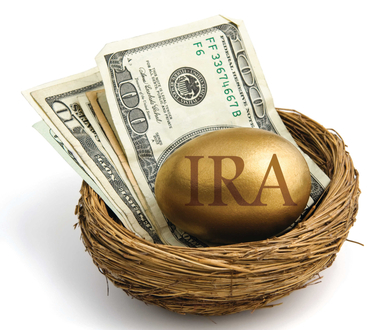Don’t you just love it…

by Marty Tydings
Op-Ed
Don’t you just love it when a professional of some kind talks to you in a language you don’t understand? I am usually (sarcastically) thinking something along the line of “well thanks so much, that really clears things up for me.”
However, I must admit I recently found myself guilty of it as well. In a conversation over supper with a cousin, I brought up the subject of Roth IRA’s, Traditional IRA’s, etc. Finally, she just looked at me and said, “I have no idea of what you are talking about.” I had become so used to these terms I just thought everyone knew them. Obviously not.
The term IRA is just short for Individual Retirement Account (or arrangement). At one time, larger employers provided pensions for their employees that provided monthly income payments during retirement, but that has for the most part gone by the wayside now. So, Congress passed a law in 1974 allowing employees to put pre-tax money - money that has not been federally or state taxed - into an account designated for retirement.
This type of IRA is now often referred to as a ‘Traditional’ IRA. When you start withdrawing money from a traditional IRA during retirement you will pay income taxes on the amount you invested plus on the amount it made as you withdraw it. For instance, say you would like to withdraw $750 a month from your IRA, if you are in the 15 percent tax bracket (not counting state taxes) you would end up with $637.50.
In 1997, a twist came into the life of the normal everyday IRA; the Roth IRA was created. It was the best thing ever. Actually, it is still incredible. With the Roth IRA, the money invested is out of the money you bring home, after all your taxes have been deducted. Once you pay taxes on the money you bring home and invest in the Roth IRA you don’t pay taxes again, not on the amount you invested, and not on the growth. Therefore, if you withdraw $750 from your Roth IRA you would receive $750.
I have a sneaking suspicion the government would rather you invest in a traditional IRA allowing you to generously pay more money to the IRS than you would if you would have invested in a Roth IRA.
IRAs are not set up through an employer but generally through investment advisors or banks.
In either type of IRA, for 2016, you can invest up to $5,500 if you are under 50 and up to $6,500 if you are 50 or older. Even if you have a Traditional IRA and a Roth IRA, the total between the two cannot be more than $5,500 under 50 and $6,500 50 or older.
Naturally, there is a ‘gotcha’. If the money is taken out of the IRA (whether Traditional or Roth) before hitting 59 and ½, there will be a 10 percent penalty. The government wants you to invest for your retirement and will penalize you to ‘encourage’ you to leave the money alone. Taking your own hard-earned money out of the account before hitting the magic age (59 and ½) will zap you with a 10 percent penalty. Think of it as a little electric shock on your refrigerator to keep you away from the ice cream at midnight. All in your best interest of course.
Often larger employers will offer a 401(k) account that employees may invest money in for retirement. The term 401(k) is just short for the ‘Internal Revenue Code, subsection 401(k)’. It is a pre-tax account, like the Traditional IRA, but it has higher contribution limits, for 2016, the limit is $18,000.
One of the strategies I like is if you have a 401(k) available with a match, invest up to the match and then fund a Roth IRA. If you have more money to invest after you have contributed the maximum amount to the Roth, then go back to the 401(k) and increase your contribution. No one ever said, ‘darn, I just have so much money in retirement I don’t know how I will spend it all.’
If you would like to contact Marty Tydings with no cost and no obligation. Call (913) 608-5820 or visit www.goodtydings.com.
_
Copyright 2016 The Gayly - 12/22/2016 @ 7:52 a.m.





